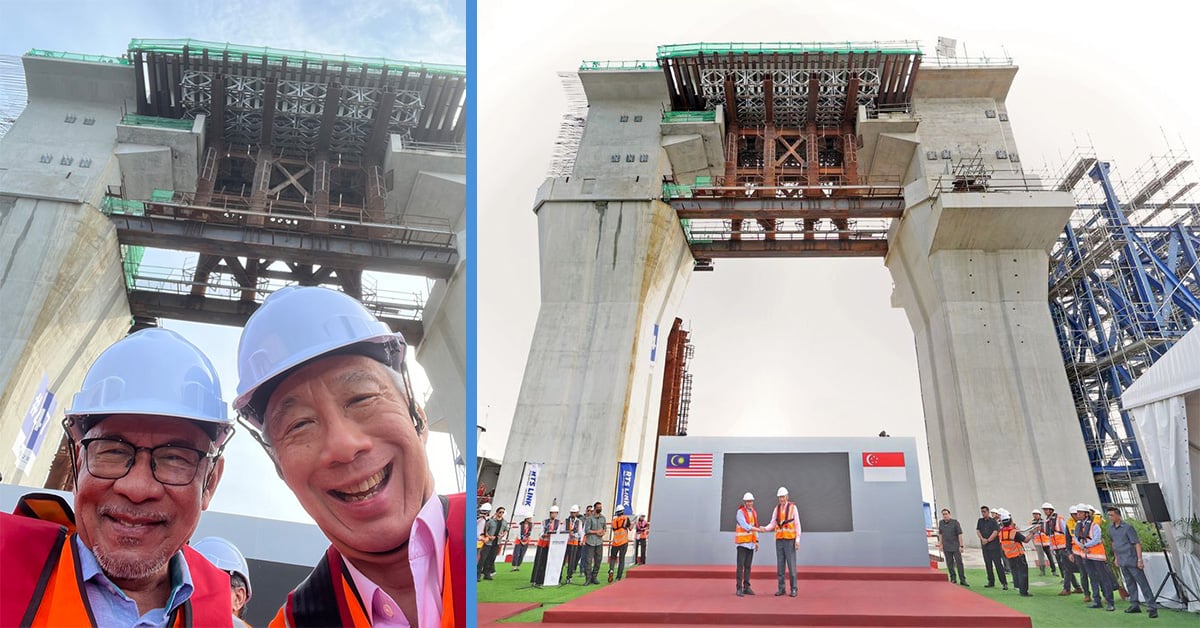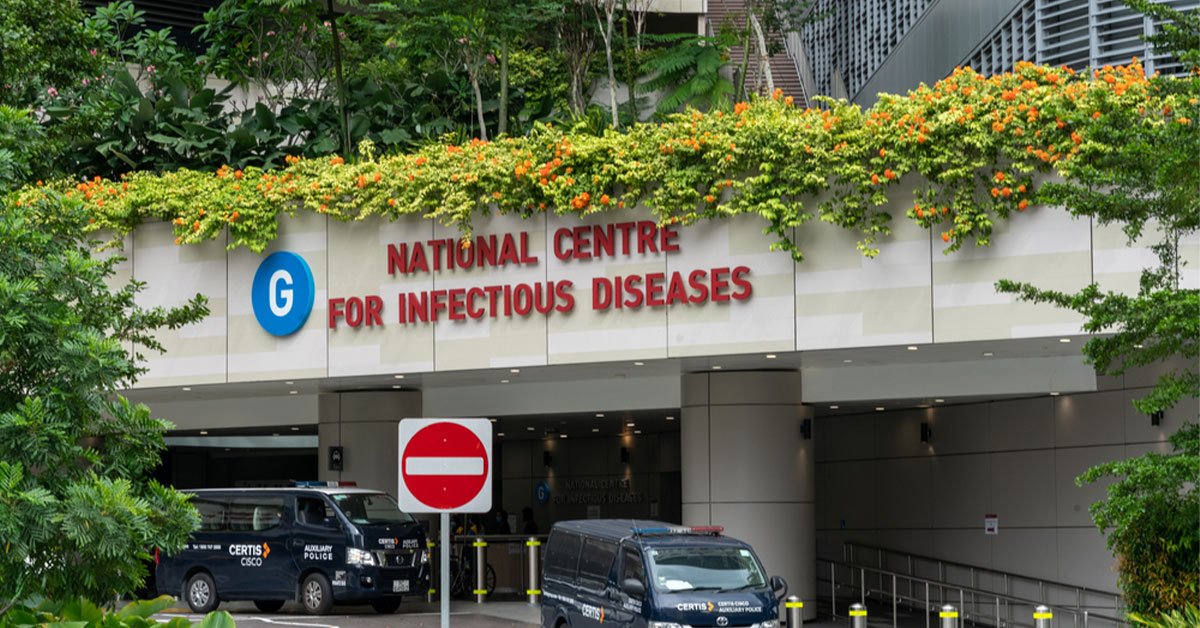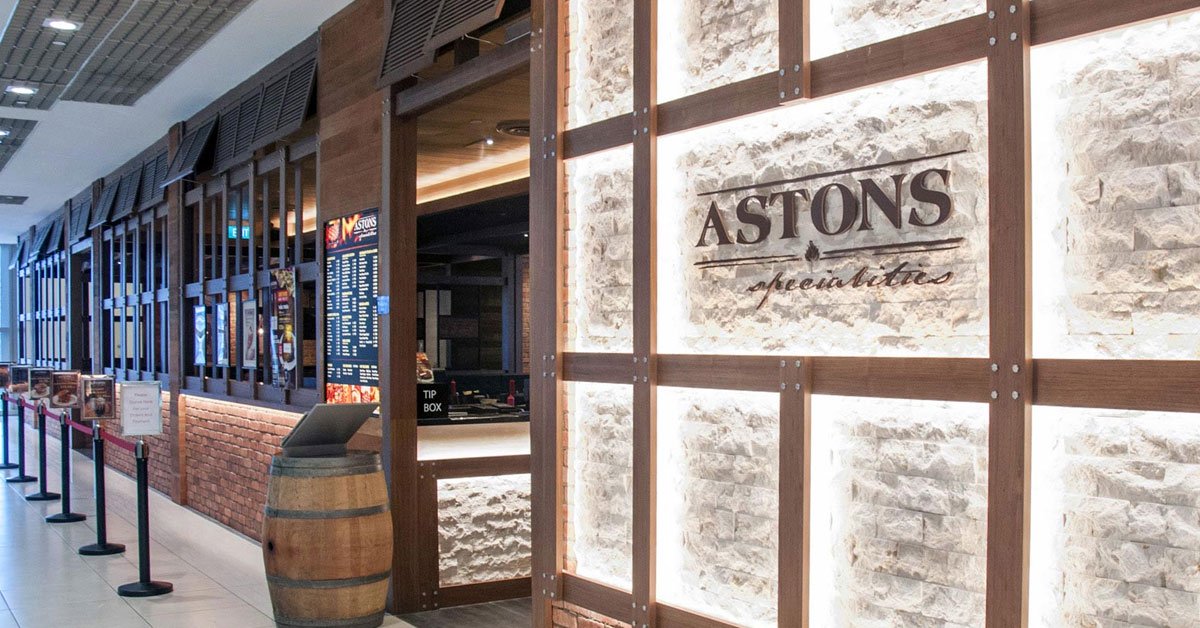As you know, we’ve been waiting for the Johor Bahru-Singapore Rapid Transit System (RTS) Link for a long time.
The construction of the RTS Link has been met with several challenges, including delays.
At one point, it was even suspended for six months.
Some people lost hope when the original target completion date was moved from 31 December 2024 to 2026.
However, it seems like we’ll finally get it by December 2026.
Optimistic updates about the project were revealed during Prime Minister Lee Hsien Loong’s visit to Johor Bahru on 11 January.
Here is everything you need to know.
1. PM Lee and Malaysia Prime Minister Anwar Ibrahim met on 11 January to mark the completion of the RTS Link’s connecting span.
During PM Lee’s official visit to Johor Bahru, both prime ministers signed commemorative plaques symbolising a shared commitment to the construction project.
The prime ministers also committed to improving connectivity between Singapore and Johor Bahru.
In a post on X, formerly Twitter, PM Lee posted a selfie with Mr Anwar with the caption, “With PM @anwaribrahim in Johor this morning to commemorate the completion of the RTS Link connecting span!”
The RTS Link ceremony was part of PM Lee’s official visit to Johor.
Notably, this is his first overseas visit of 2024.
2. The RTS Link has reached 65% completion.
On 11 January, it was announced that the project is now more than 65% complete on each side.
Of the 65%, the completion of the connecting span is a huge milestone.
It is a 17.1m-long reinforced concrete structure that connects both sides of the viaduct.
Specifically, it connects Malaysia’s Pier 47 and Singapore’s Pier 48 above sea level.
These two piers are the closest piers to the other country.
3. Singapore’s pile caps have been completed.
The connecting span isn’t the only thing that has been completed.
According to Singapore’s Land Transport Authority (LTA), all 12 pile caps in the Straits of Johor on Singapore’s side have been completed.
If you’re unsure what a pile cap is, it’s a thick concrete mat that rests on the concrete on timber piles.
The timber tiles are usually driven into soft or unstable ground.
Pile caps provide a stable foundation, which is crucial for a rail project as large as the RTS Link to support the rail viaduct structure on land and sea.
Construction of the piers and the launch of viaduct segments are ongoing.
4. Installation works for the rail systems will be done by RTS Operations.
Installation work will begin after civil infrastructure work is done.
RTS Operations is a joint venture between Malaysia’s Prasarana and Singapore’s SMRT to operate the RTS Link Service.
The RTS shuttle service will run between the Malaysia terminus at Bukit Chagar station in Johor Bahru and the Singapore terminus at Woodlands North station.
5. Woodlands North station will be connected via an underground linkway to the immigration area.
On Malaysia’s end, the immigration facilities will also be located at Bukit Chagar station.
Thus, passengers would only need to clear immigration authorities at their point of departure.
At present, passengers need to clear immigration at both departure and arrival.
Therefore, the new system would improve the connectivity between both countries by streamlining the immigration process.
6. LTA said that the Woodlands North Station and CIQ (customs, immigration and quarantine) building will be ten times the size of your usual MRT station.
LTA added that the Woodlands North Station and CIQ building would be three stories with two basement levels.
Notably, the Woodlands North station is being constructed at a maximum depth of 28m.
The CIQ building is designed to meet BCA’s Green Mark Platinum Certification.
It has energy-saving equipment like LED lighting, solar panels and a hybrid cooling system incorporated into its design and operations.
Talk about being high-tech.
The station and the CIQ building will be connected to the Thomson-East Coast Line Woodlands North MRT station by an underground concourse.
7. Fares for the RTS Link will be “determined commercially” by RTS Operations.
This was revealed by Acting Minister for Transport Chee Hong Tat on 11 January.
He added that RTS Operations would need to consider certain factors before coming to a conclusion.
For instance, the company would need to consider the demand for RTS services and “the cost of providing an efficient and reliable service for commuters on a financially sustainable basis”.
Furthermore, RTS Operations would need to consider the fares of alternative travel options like taxis, coaches and ferries.
8. The RTS Link will reduce congestion on the Causeway by 35%.
The Causeway is infamous for being massively congested.
However, the 4km RTS Link is set to ferry up to 10,000 passengers an hour each way.
Furthermore, the journey is only five minutes.
Malaysia’s Transport Minister Anthony Luke said that the RTS Link will help reduce congestion on the Causeway by 35%.
He added, “We must ensure that our infrastructure meets the demands of one of the world’s busiest border crossings.”
More than 300,000 Malaysians cross the Causeway every day.
Mr Chee pointed out that the RTS Link is “much more than building bridges”.
He added, “It is about building stronger ties between the people of Singapore and the people of Malaysia.
“It is also about building a better future for both countries, strengthening our longstanding friendship, and creating more win-win opportunities for our businesses and citizens in the areas of common interests and mutual benefit.”
2025 will be Singapore and Malaysia’s 60th anniversary of bilateral relations.
In a Facebook post about the RTS Link ceremony, PM Lee noted that the prime ministers of both countries also witnessed the signing of the Johor-Singapore Special Economic Zone (JS-SEZ) MOU.
He said, “Together with the RTS Link, the SEZ will enhance cross-border links, support businesses, and create jobs on both sides of the Causeway.”
PM Lee echoed Mr Chee’s sentiments on “win-win” opportunities.
He added, “I look forward to both countries charting new areas of cooperation, including in trade and investment, tourism, innovation, and the digital and green economies.”



